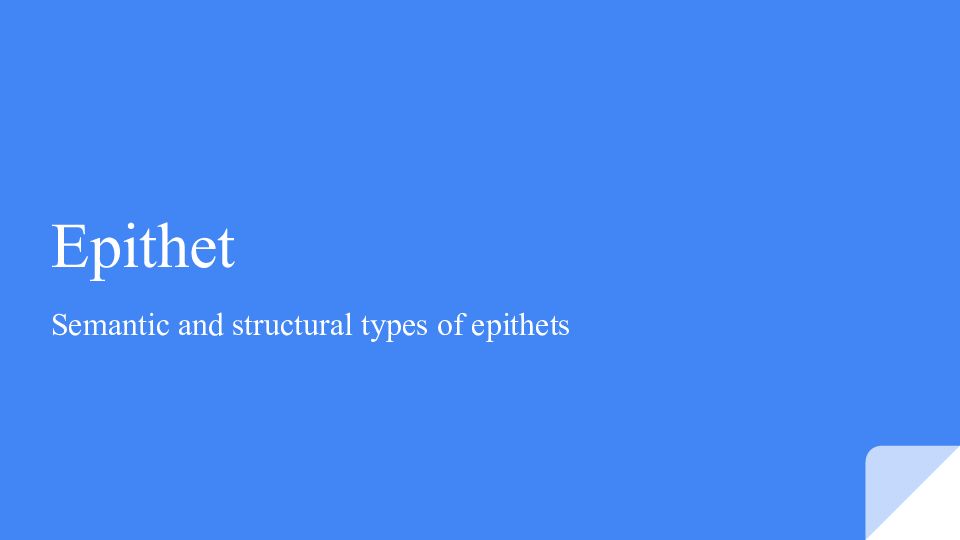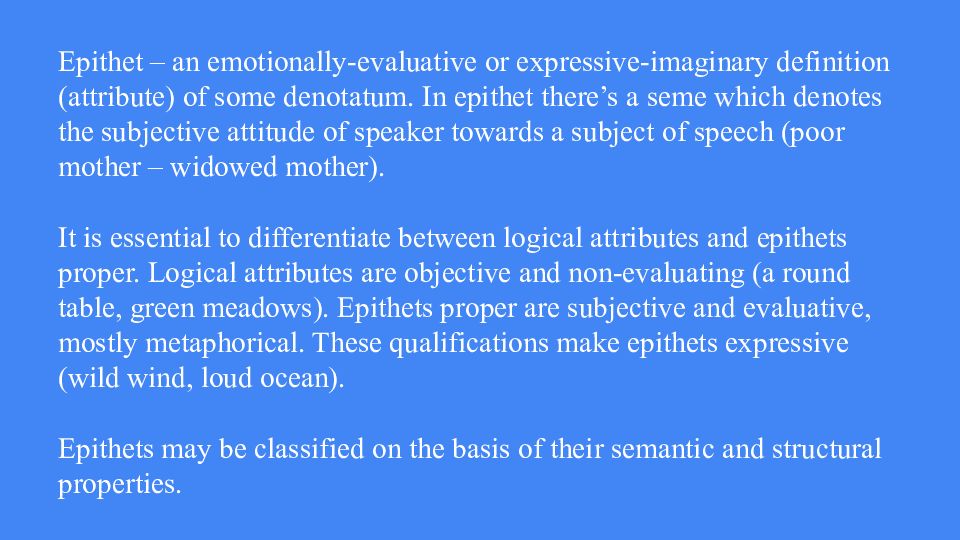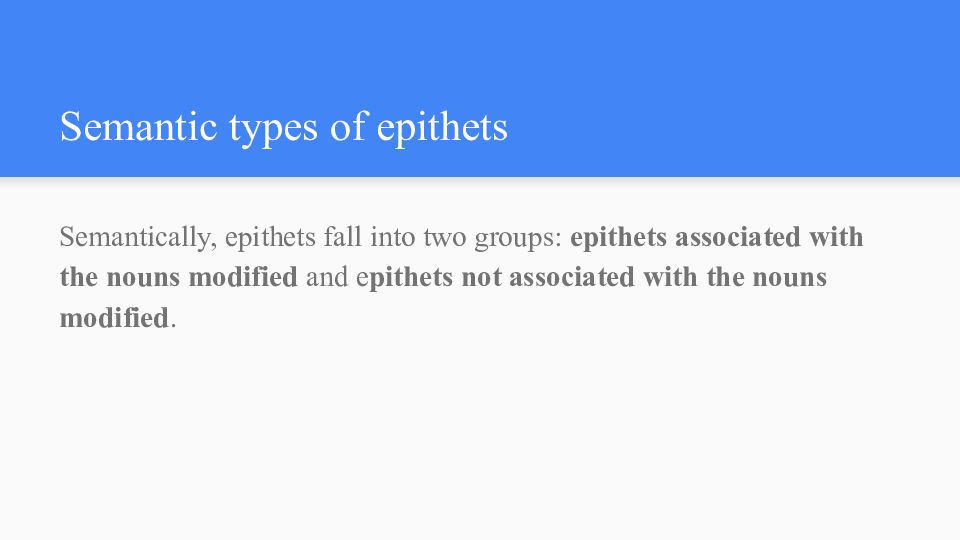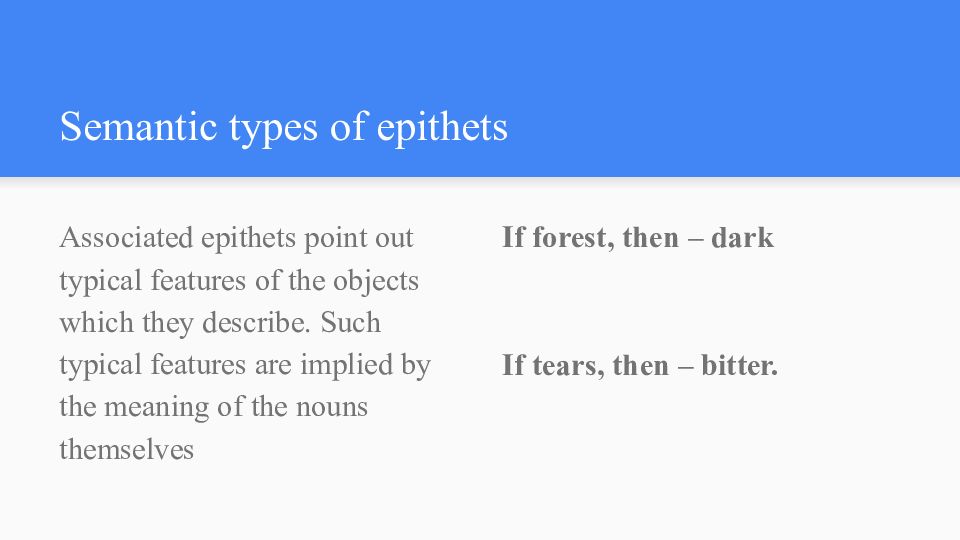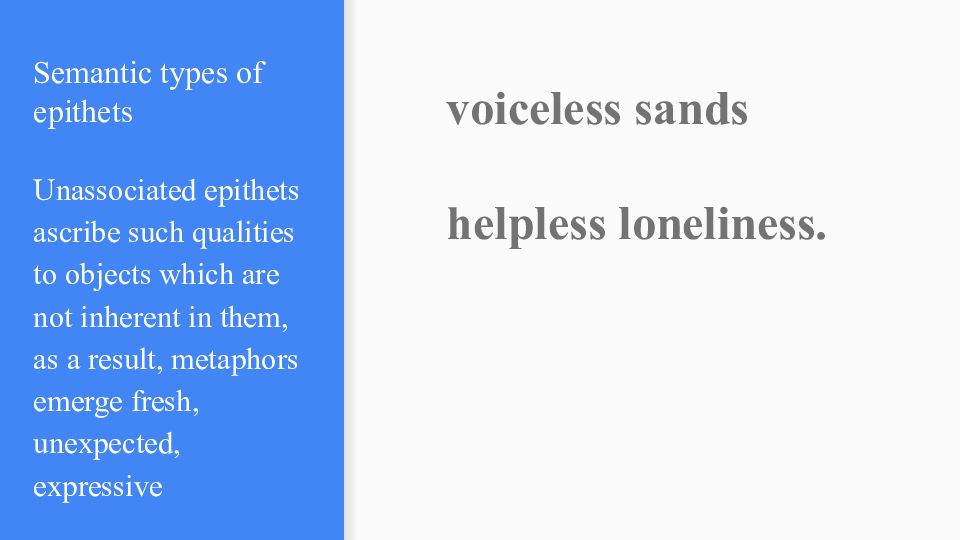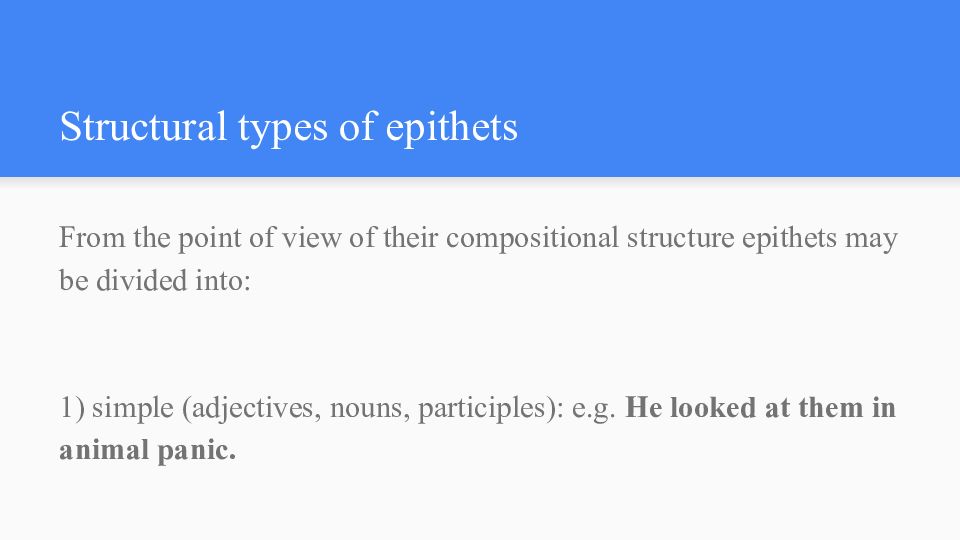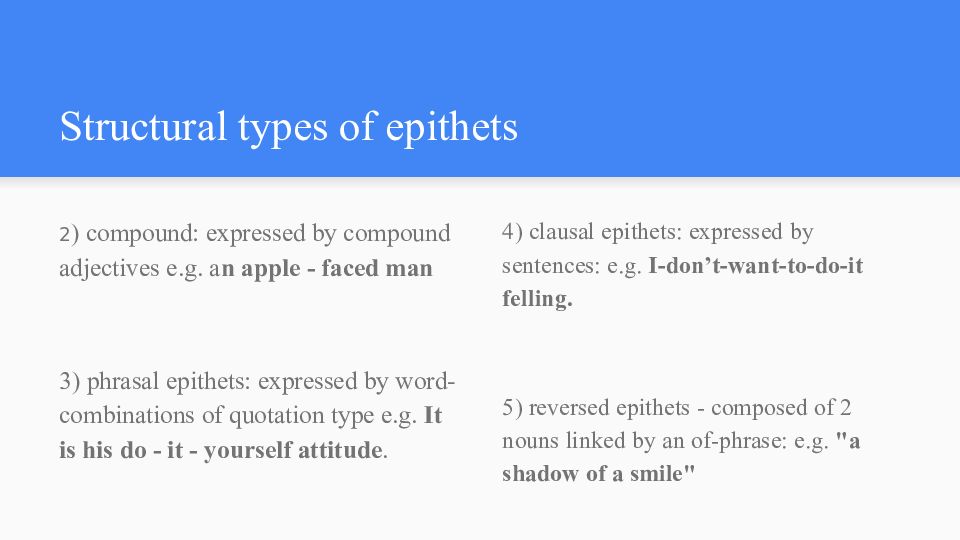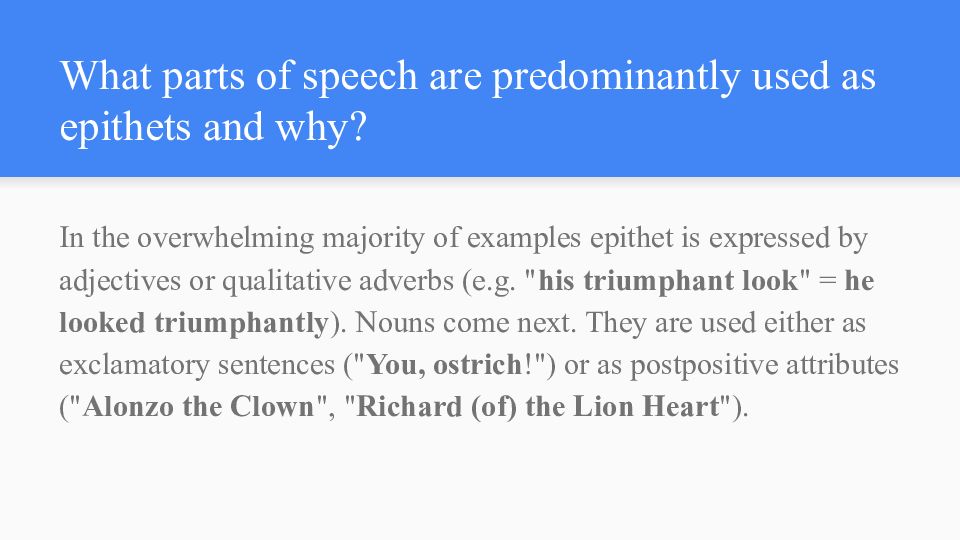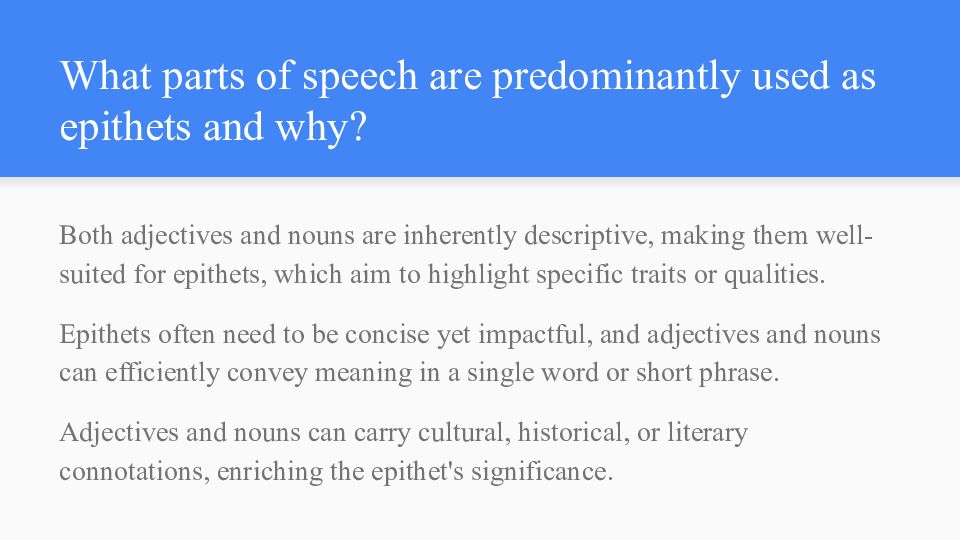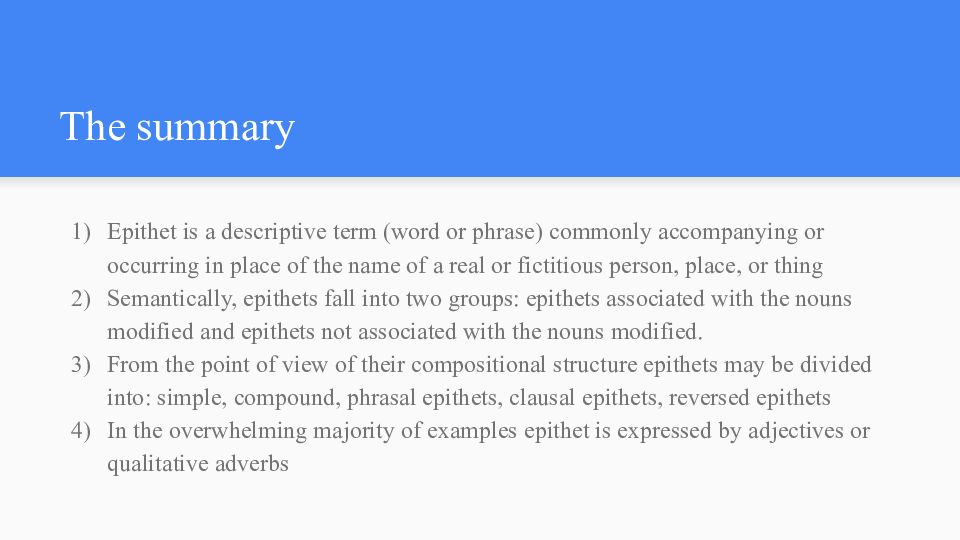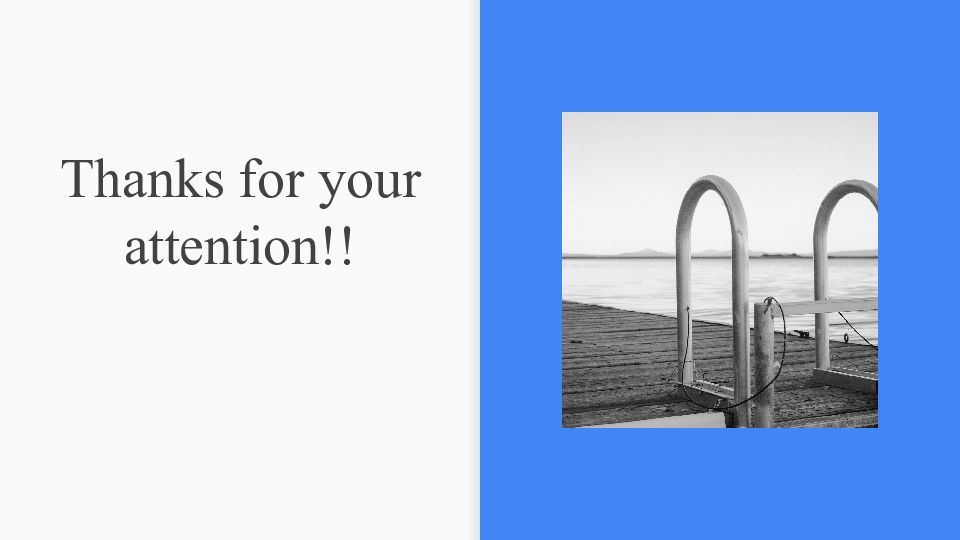Слайд 2: Epithet – an emotionally-evaluative or expressive-imaginary definition (attribute) of some denotatum. In epithet there’s a seme which denotes the subjective attitude of speaker towards a subject of speech (poor mother – widowed mother). It is essential to differentiate between logical attributes and epithets proper. Logical attributes are objective and non-evaluating (a round table, green meadows). Epithets proper are subjective and evaluative, mostly metaphorical. These qualifications make epithets expressive (wild wind, loud ocean). Epithets may be classified on the basis of their semantic and structural properties
Слайд 3: Semantic types of epithets
Semantically, epithets fall into two groups: epithets associated with the nouns modified and e pithets not associated with the nouns modified.
Слайд 4: Semantic types of epithets
Associated epithets point out typical features of the objects which they describe. Such typical features are implied by the meaning of the nouns themselves If forest, then – dark If tears, then – bitter.
Слайд 5: Semantic types of epithets
Unassociated epithets ascribe such qualities to objects which are not inherent in them, as a result, metaphors emerge fresh, unexpected, expressive voiceless sands helpless loneliness.
Слайд 6: Structural types of epithets
From the point of view of their compositional structure epithets may be divided into: 1) simple (adjectives, nouns, participles): e.g. He looked at them in animal panic.
Слайд 7: Structural types of epithets
2 ) compound: expressed by compound adjectives e.g. a n apple - faced man 3) phrasal epithets: expressed by word-combinations of quotation type e.g. It is his do - it - yourself attitude. 4) clausal epithets: expressed by sentences: e.g. I-don’t-want-to-do-it felling. 5) reversed epithets - composed of 2 nouns linked by an of-phrase: e.g. "a shadow of a smile"
Слайд 8: What parts of speech are predominantly used as epithets and why?
In the overwhelming majority of examples epithet is expressed by adjectives or qualitative adverbs (e.g. " his triumphant look " = he looked triumphantly ). Nouns come next. They are used either as exclamatory sentences (" You, ostrich !") or as postpositive attributes (" Alonzo the Clown ", " Richard (of) the Lion Heart ").
Слайд 9: What parts of speech are predominantly used as epithets and why?
B oth adjectives and nouns are inherently descriptive, making them well-suited for epithets, which aim to highlight specific traits or qualities. Epithets often need to be concise yet impactful, and adjectives and nouns can efficiently convey meaning in a single word or short phrase. Adjectives and nouns can carry cultural, historical, or literary connotations, enriching the epithet's significance.
Слайд 10: The summary
Epithet is a descriptive term (word or phrase) commonly accompanying or occurring in place of the name of a real or fictitious person, place, or thing Semantically, epithets fall into two groups: epithets associated with the nouns modified and epithets not associated with the nouns modified. From the point of view of their compositional structure epithets may be divided into: simple, compound, phrasal epithets, clausal epithets, reversed epithets In the overwhelming majority of examples epithet is expressed by adjectives or qualitative adverbs
